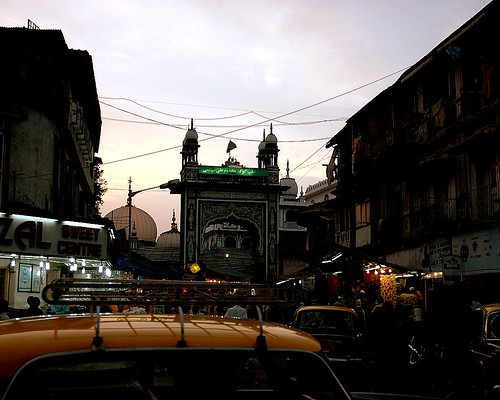
Traffic on Mumbai streets does not ebb and flow like the tides of the Arabian Sea. There is always a constant torrent of vehicles travelling the citys' many thoroughfares and when things stop it is usually bad news or traffic jams, which to many is one and the same. Many a time I find myself a pedestrian in Mumbai, in a world full of pedestrians dominated by a minority of fast moving cars and buses. The object of my attention lies patiently on the other side of road and I wait impatiently on this - waiting for a small gap in the traffic to sprint across the warm concrete road. What is in my sight you ask ? In one of the oldest parts of Bombay on what was once Mahim the island - the dargah of Makhdoom Ali Mahimi.
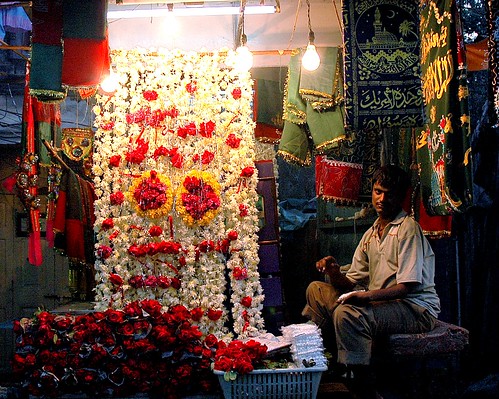
[Chaddars, blanket of flowers and sweet incense rising]

[Photograph me if you wish this man told me, but on one condition. No not money but a bar of soap. Why? you ask because I want to wast my face, hands and feets so that I can pray. I have my photograph he has his soap.]

[A shopkeeper and his Mecca]
It is a green and crème single domed mausoleum to this Suffi saint that surrounds itself with a chaotic mix of devotees, beggars, people, the arbit taxi and a line of shops selling the most peculiar coterie of colourful chaddars [shawls], incense and flowers. The chaddars [shawls] are placed on the tomb to pay respect to the saint and gain his blessing. This dargah like its more famous city counter-part, Haji Ali is steeped in urban legend. For Makhdoom Ali Mahimi is the respected patron sufi saint of the Mumbai Police.
Wikipedia tells me,
During the annual ten day Urs festival celebrated on the 13th day of Shaval,[sometime in December] the Muslim calendar, millions of devotees visit his dargah. The highlight of this is a procession of around eight thousand begins at the Mahim Police Station, believed to be the site of his residence. Two policemen from each of the eighty four city police stations represent the police whose association with the saint dates back to the saint's era. A representative of the Mumbai police who is the first to offer the "chaddar" (shawl) at the tomb on the first day of the festival. Legend has it that it was a police constable who gave water to the dying saint from his cap. Another story points to some miraculous assistance policemen once received from an old man, whom they believed was the saint, in fighting smugglers.
A room adjacent to the office of the senior inspector of police station contains a steel cupboard that houses the saint's preserved belongings such as his chair, a pair of sandals and his hand-written Quran which is considered to be a calligraphic work of art. The room is opened once every year to the public. In 1920 the cupboard was purchased by a senior British police inspector, Raymond Esquire as a tribute to the saint he revered.
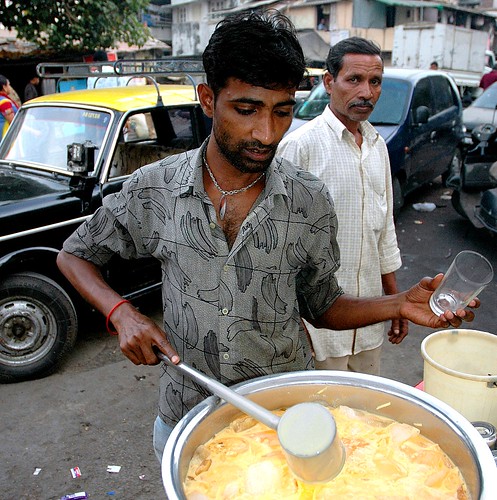
[If I were the copywriter on the Hutch account :Orange (Hutch) ka chota re-charge for RS 2.]
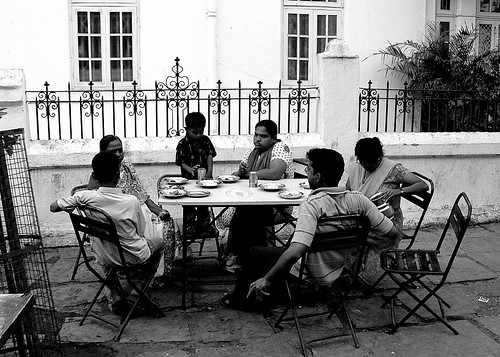
[A large Sunday Brunch on a lazy evening - the small pleasures of like]
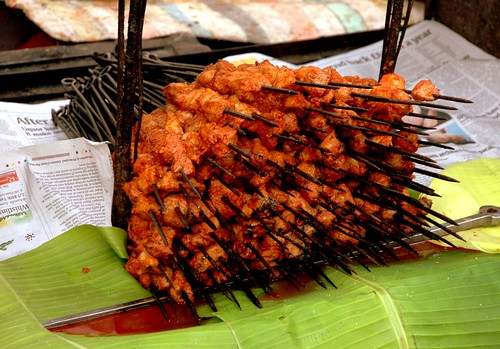
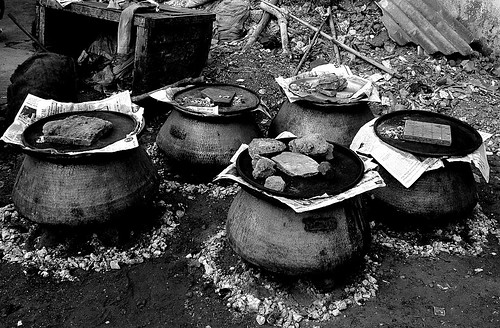
[Biriyani is cooking]
What lead me here wasn’t the green lights of the dargah but the slow rising glint of smoke from the charcoal that lit the kebabs red. Yes food is my first concern and on Sunday evenings just like the lanes that surround the dargah play host to a khao gulli [food lane] of sorts. A food lane that answers your every gastronomic prayers from baida rotis to kebabs to rich ghee filled rava halwas [sweet] served with crispy parathas and sweet faloodas.
In India food and spirituality are never far apart..... and I'm not complaining.
Unknown
Hi, We are templateify, we create best and free blogger templates for you all i hope you will like this blogify template we have put lot of effort on this template, Cheers, Follow us on: Facebook & Twitter